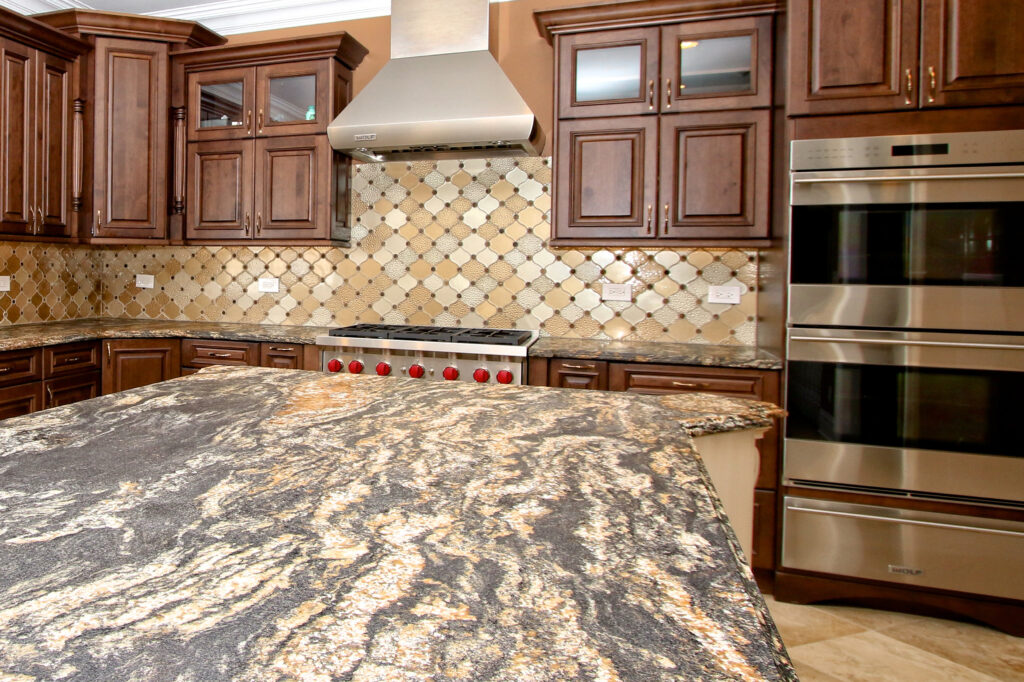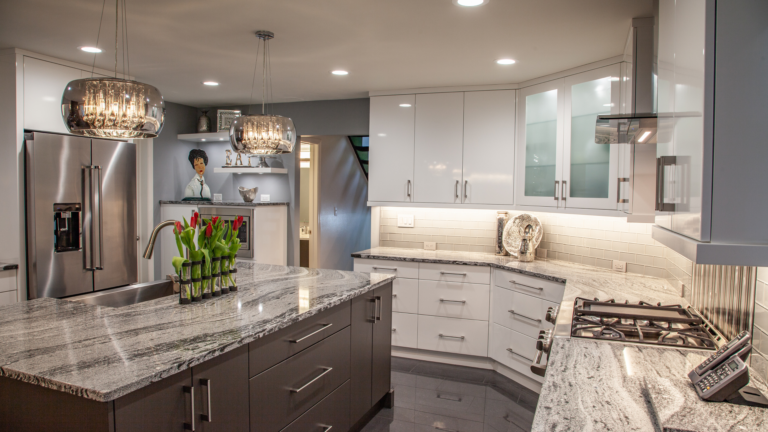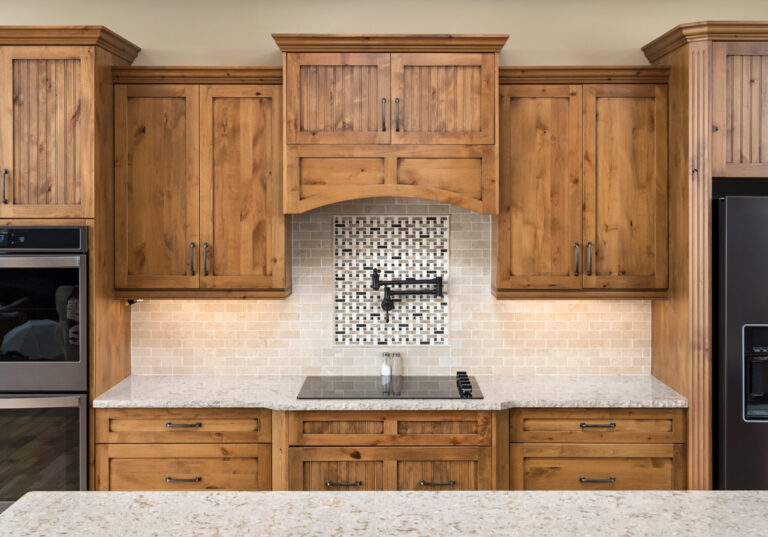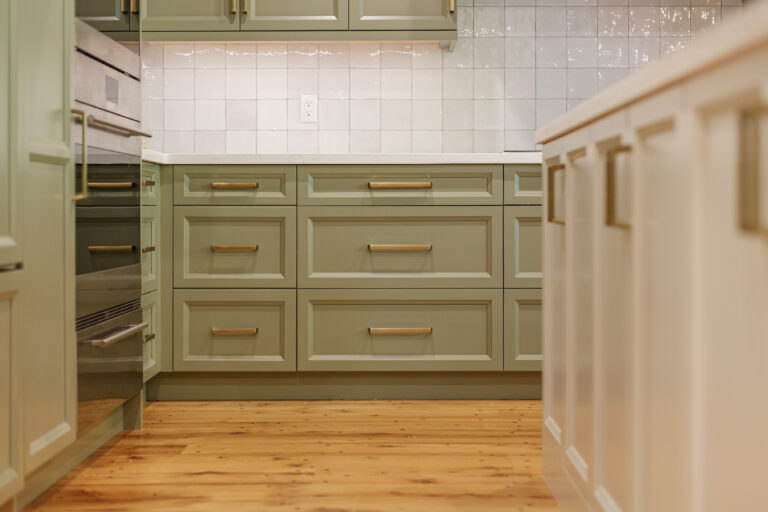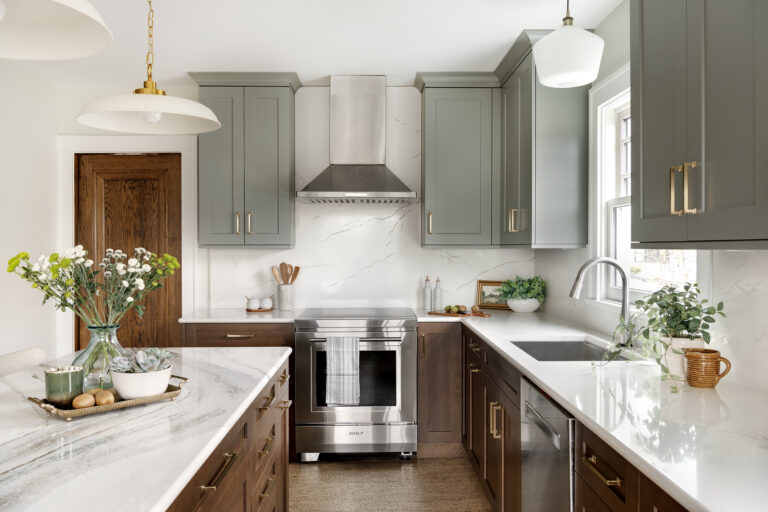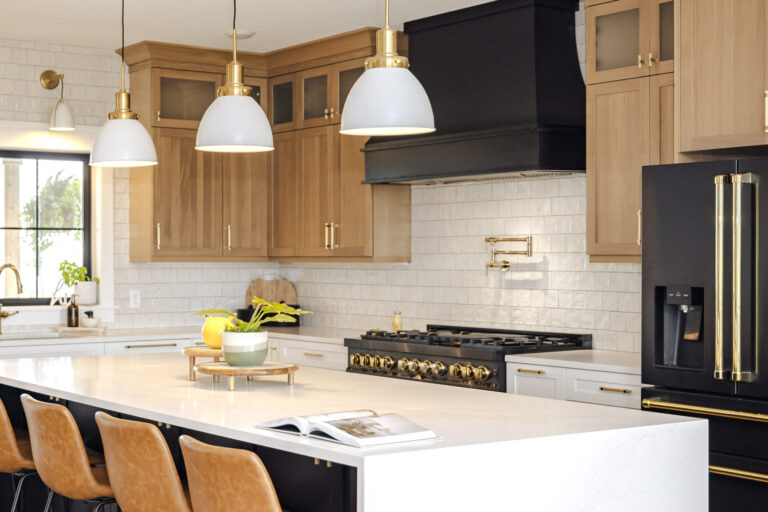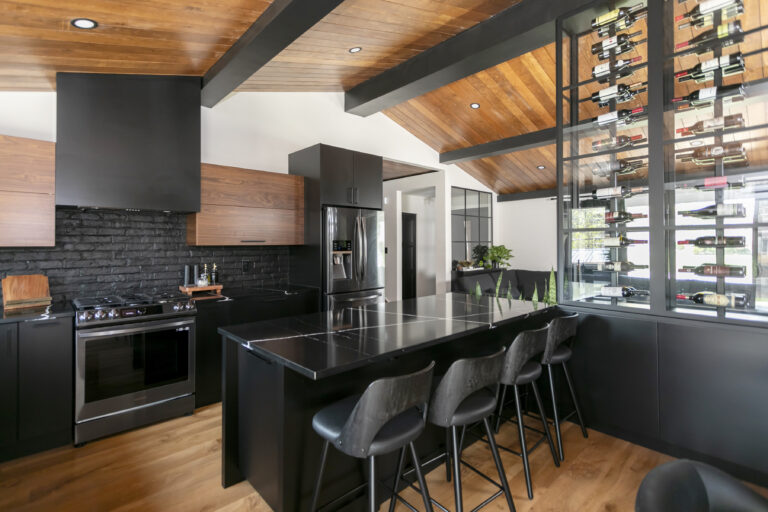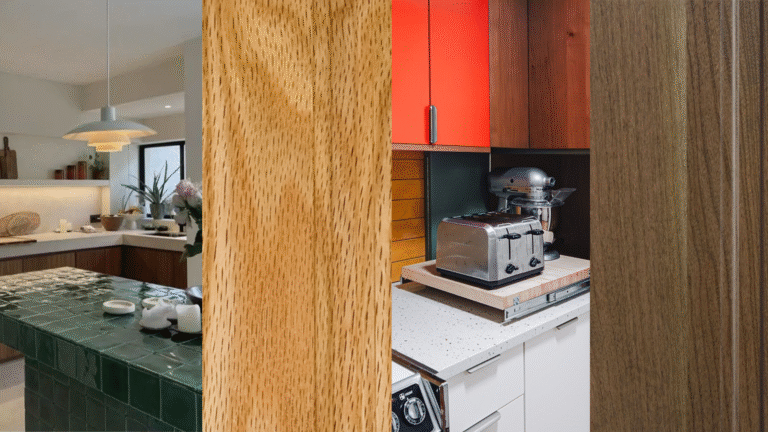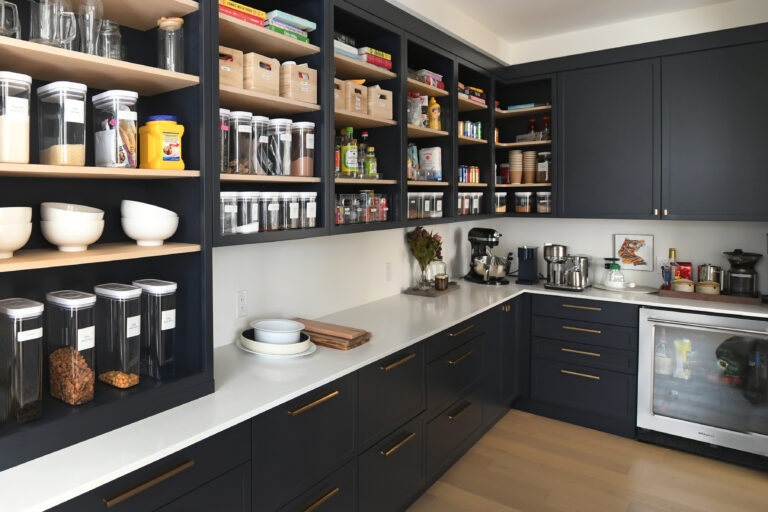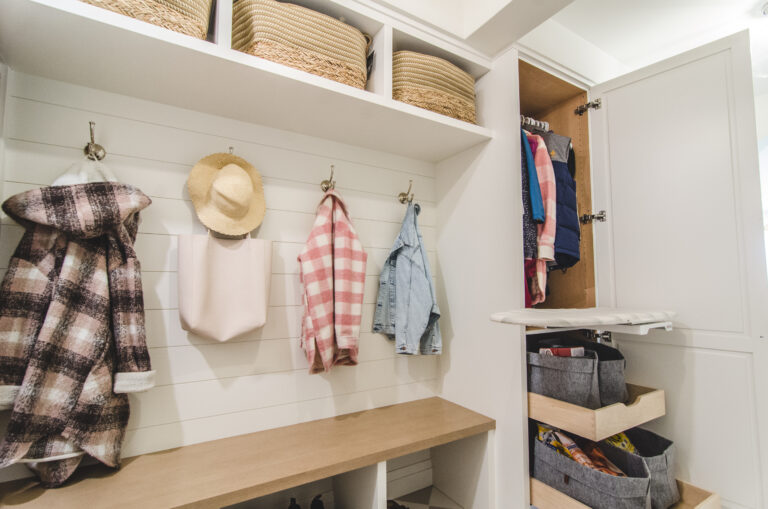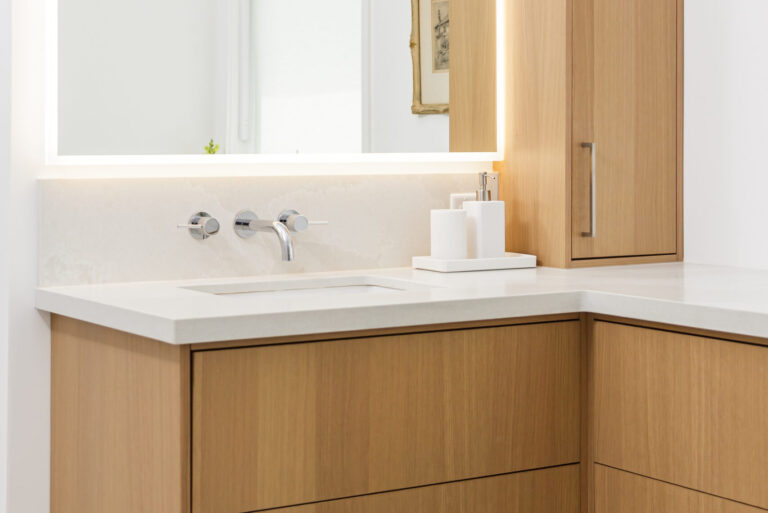Beige and brown granite countertops once defined what a high-end kitchen looked like. For years, they were everywhere, polished and paired with dark wood cabinets that felt warm and inviting. But as design shifted toward lighter, simpler spaces, homeowners began to favor brighter and lighter stone.
Kitchen renovations remain one of the smartest home investments you can make. The Appraisal Institute of Canada lists kitchen remodels as the number one project for return on investment, consistently ranking highest among the top five renovations that add resale value (AIC). Whether you are updating an existing space or planning a full redesign, understanding where granite stands in today’s market helps you make better decisions for your home.
Are Granite Countertops Outdated?
They are not leading the trend cycle, but they are far from outdated. When used thoughtfully, beige and brown granite can feel timeless, warm, and inviting.
The difference comes down to finish and balance. Pairing heavy granite with dark cabinetry like cherry, and glossy surfaces can easily feel early 2000s. But pairing it with modern cabinet lines, lighter tones, and matte finishes gives it a renewed sense of style.
If you are designing for resale, buyers may still prefer the soft veining of quartz. But if you are designing for yourself, beige and brown granite can be beautiful again. It has authenticity, depth, and warmth that engineered stone often lacks.
The History of Beige and Brown Granite Countertops
Granite became a kitchen favorite in the 1990s and early 2000s because it was natural, durable, and seen as a sign of quality and richness. Beige and brown tones worked beautifully with the honey oak and cherry cabinetry that dominated the era. The color palette leaned warm and traditional, and polished granite was considered the dream finish.
According to the National Kitchen and Bath Association, granite was the most loved countertop material through the 2000s, defining kitchens from 2000 to 2009 as homeowners looked for natural, long-lasting materials that symbolized luxury (NKBA).
That love for granite has never completely faded. As United Granite explains, “Granite is one of the most preferred countertop materials for most consumers all over the world. Granites are natural, durable, and available in a wide range of colors. Using granite materials obviously increases the value of your home” (United Granite).
Over time, though, the look became overused. A copy paste brown on brown kitchen in every home. When white quartz and marble-inspired counters entered the market, homeowners traded the busy granite patterns for smooth, subtle veining and cooler tones. What once looked luxurious began to look dated. A reason why keeping up with trends can be exhausting and chasing a timeless kitchen is difficult.
Why Did Beige and Brown Granite Countertops Fall Out of Style?
Design trends changed. Kitchens became lighter, brighter, and more minimal. beige and brown granite countertops, with their heavy speckling and high-shine finish, no longer matched the clean lines people wanted.
The issue was rarely the granite itself. Just like with cherry or oak cabinetry, the way the material was finished made the biggest difference. Honey oak feels dated, but modern rift-cut oak is trending again. The same is true for granite. The dense, speckled patterns that once dominated countertops now feel busy, while stones with more open veining feel refined and fresh.
In short, it is not the granite that looks old, but the combination of color, finish, and cut that makes it feel out of step now.
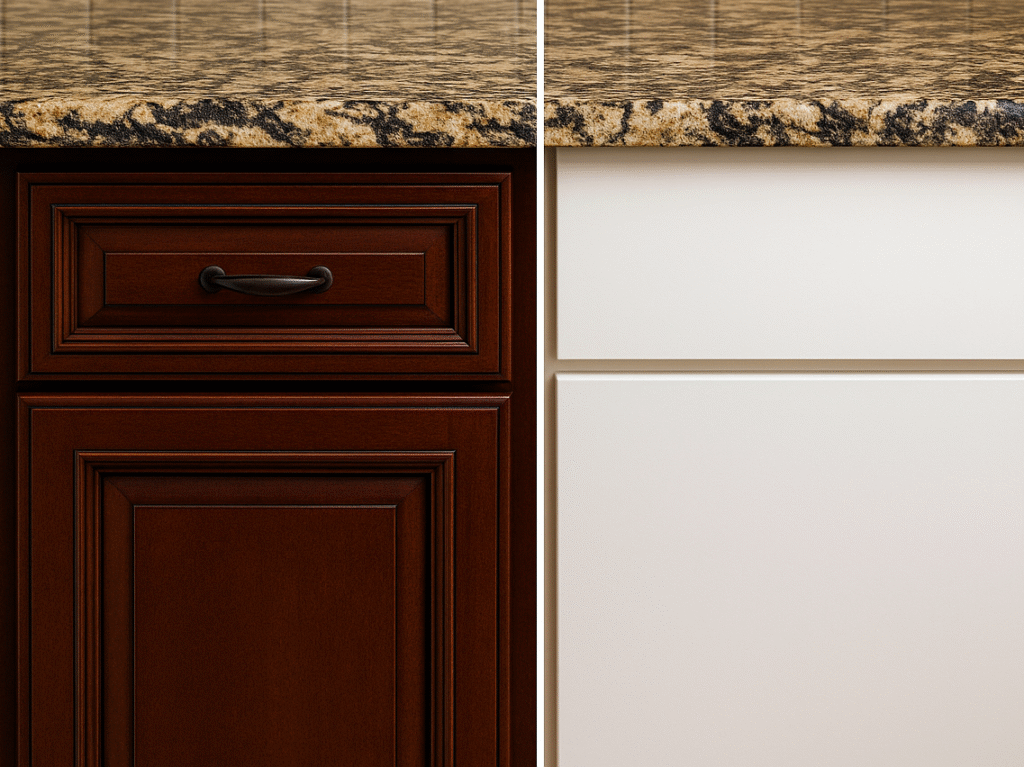
Beige and Brown Granite Countertops Are Making a Comeback!
Warmth is returning to kitchen design, and that shift brings beige and brown granite back into the conversation. But the new look is more refined.
Granite has a wide range of appearances, and not all beige or brown stones are the same. Some are tightly speckled, others have long flowing veins. The way the stone is cut determines the final look. Bold veining feels more on trend right now than fine speckling because it adds movement without overwhelming the space.
The surface finish also matters. Honed or leathered granite softens the reflection, removing the gloss that made older kitchens feel dated. Lighter cabinets, such as white oak or soft taupe, create contrast and make the granite feel grounded rather than dark and heavy.
How to Modernize Beige and Brown Granite Countertops
If you already have beige or brown granite, you don’t need to replace it to make your kitchen feel current. Focus on what surrounds it.
Start with the cabinetry. Lighter wood tones or painted finishes in white, cream, or taupe brighten the entire space. A modern cabinet door style, such as a flat panel or simple shaker, helps the granite look intentional rather than leftover from an older design.
Hardware and lighting make a big impact too. Black or brass handles and fixtures add definition and contrast to warm-toned granite. Choose lighting with a soft white glow to balance the color.
If you are planning a backsplash, keep it simple. A neutral tile or plaster finish works better than a patterned tile, letting the granite be the texture in the room.
Lighter shades of granite with visible veining tend to look more updated than deep brown or heavily speckled versions. The goal is to keep the natural movement of the stone without the visual noise that made older patterns feel dated.
Should You Choose Beige and Brown Granite Countertops?
Design always cycles back. What once felt dated often returns with a new perspective. Granite is no exception.
Expect to see lighter granites with veining become more popular than the dark, speckled versions from the past. The focus is on texture, variation, and a natural look rather than shine. The stone itself remains a durable, lasting choice. It is the color, finish, and pairing that determine whether it feels current.
Beige and brown granite countertops are not disappearing. They are simply evolving, just like every other natural material.


